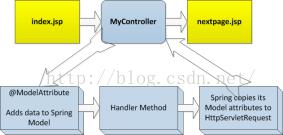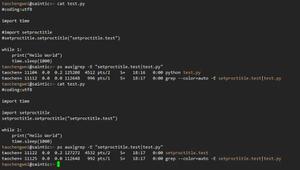Mybatis中collection和association的使用区别详解
最近一直把collection和association弄混,所以为了增强自己的记忆,就撸一个关系出来算是总结罢了
1. 关联-association
2. 集合-collection
比如同时有User.java和Card.java两个类
User.java如下:
public class User{
private Card card_one;
private List<Card> card_many;
}
在映射card_one属性时用association标签, 映射card_many时用collection标签.
所以association是用于一对一和多对一,而collection是用于一对多的关系
下面就用一些例子解释下吧
association-一对一
人和身份证的关系
下面是pojo
public class Card implements Serializable{
private Integer id;
private String code;
//省略set和get方法.
}
public class Person implements Serializable{
private Integer id;
private String name;
private String sex;
private Integer age;
//人和身份证是一对一的关系
private Card card;
//省略set/get方法.
}
下面是mapper和实现的接口
package com.glj.mapper;
import com.glj.poji.Card;
public interface CardMapper {
Card selectCardById(Integer id);
}
<?xml version="1.0" encoding="UTF-8"?>
<!DOCTYPE mapper
PUBLIC "-//mybatis.org//DTD Mapper 3.0//EN"
"http://mybatis.org/dtd/mybatis-3-mapper.dtd">
<mapper namespace="com.glj.mapper.CardMapper">
<select id="selectCardById" parameterType="int" resultType="com.glj.poji.Card">
select * from tb_card where id = #{id}
</select>
</mapper>
package com.glj.mapper;
import com.glj.poji.Person;
public interface PersonMapper {
Person selectPersonById(Integer id);
}
<?xml version="1.0" encoding="UTF-8"?>
<!DOCTYPE mapper
PUBLIC "-//mybatis.org//DTD Mapper 3.0//EN"
"http://mybatis.org/dtd/mybatis-3-mapper.dtd">
<mapper namespace="com.glj.mapper.PersonMapper">
<resultMap type="com.glj.poji.Person" id="personMapper">
<id property="id" column="id"/>
<result property="name" column="name"/>
<result property="sex" column="sex"/>
<result property="age" column="age"/>
<association property="card" column="card_id"
select="com.glj.mapper.CardMapper.selectCardById"
javaType="com.glj.poji.Card">
</association>
</resultMap>
<select id="selectPersonById" parameterType="int" resultMap="personMapper">
select * from tb_person where id = #{id}
</select>
</mapper>
PersonMapper.xml 还使用association的分步查询。
同理多对一,也是一样
只要那个pojo出现private Card card_one;
即使用association
collection 一对多和association的多对一关系
学生和班级的一对多的例子
pojo类
package com.glj.pojo;
import java.io.Serializable;
import java.util.List;
public class Clazz implements Serializable{
private Integer id;
private String code;
private String name;
//班级与学生是一对多的关系
private List<Student> students;
//省略set/get方法
}
package com.glj.pojo;
import java.io.Serializable;
public class Student implements Serializable {
private Integer id;
private String name;
private String sex;
private Integer age;
//学生与班级是多对一的关系
private Clazz clazz;
//省略set/get方法
}
<?xml version="1.0" encoding="UTF-8"?>
<!DOCTYPE mapper
PUBLIC "-//mybatis.org//DTD Mapper 3.0//EN"
"http://mybatis.org/dtd/mybatis-3-mapper.dtd">
<mapper namespace="com.glj.mapper.ClazzMapper">
<select id="selectClazzById" parameterType="int" resultMap="clazzResultMap">
select * from tb_clazz where id = #{id}
</select>
<resultMap type="com.glj.pojo.Clazz" id="clazzResultMap">
<id property="id" column="id"/>
<result property="code" column="code"/>
<result property="name" column="name"/>
<!-- property: 指的是集合属性的值, ofType:指的是集合中元素的类型 -->
<collection property="students" ofType="com.glj.pojo.Student"
column="id" javaType="ArrayList"
fetchType="lazy" select="com.glj.mapper.StudentMapper.selectStudentByClazzId">
<id property="id" column="id"/>
<result property="name" column="name"/>
<result property="sex" column="sex"/>
<result property="age" column="age"/>
</collection>
</resultMap>
</mapper>
package com.glj.mapper;
import com.glj.pojo.Clazz;
public interface ClazzMapper {
Clazz selectClazzById(Integer id);
}
ClazzMapper使用到了集合-collection 即为一对多,一个班级面对多个学生
<?xml version="1.0" encoding="UTF-8"?>
<!DOCTYPE mapper
PUBLIC "-//mybatis.org//DTD Mapper 3.0//EN"
"http://mybatis.org/dtd/mybatis-3-mapper.dtd">
<mapper namespace="com.glj.mapper.StudentMapper">
<select id="selectStudentById" parameterType="int" resultMap="studentResultMap">
select * from tb_clazz c,tb_student s where c.id = s.id and s.id = #{id}
</select>
<select id="selectStudentByClazzId" parameterType="int" resultMap="studentResultMap">
select * from tb_student where clazz_id = #{id}
</select>
<resultMap type="com.glj.pojo.Student" id="studentResultMap">
<id property="id" column="id"/>
<result property="name" column="name"/>
<result property="sex" column="sex"/>
<result property="age" column="age"/>
<association property="clazz" javaType="com.glj.pojo.Clazz">
<id property="id" column="id"/>
<result property="code" column="code"/>
<result property="name" column="name"/>
</association>
</resultMap>
</mapper>
package com.glj.mapper;
import com.glj.pojo.Student;
public interface StudentMapper {
Student selectStudentById(Integer id);
}
StudentMapper则是与班级为多对一关系,所以使用了关联-association
嗯,希望我以后又不记得二者的关系时,能感谢现在总结的自己
附上一张mybatis的类型别名图
以上是 Mybatis中collection和association的使用区别详解 的全部内容, 来源链接: utcz.com/z/350906.html









